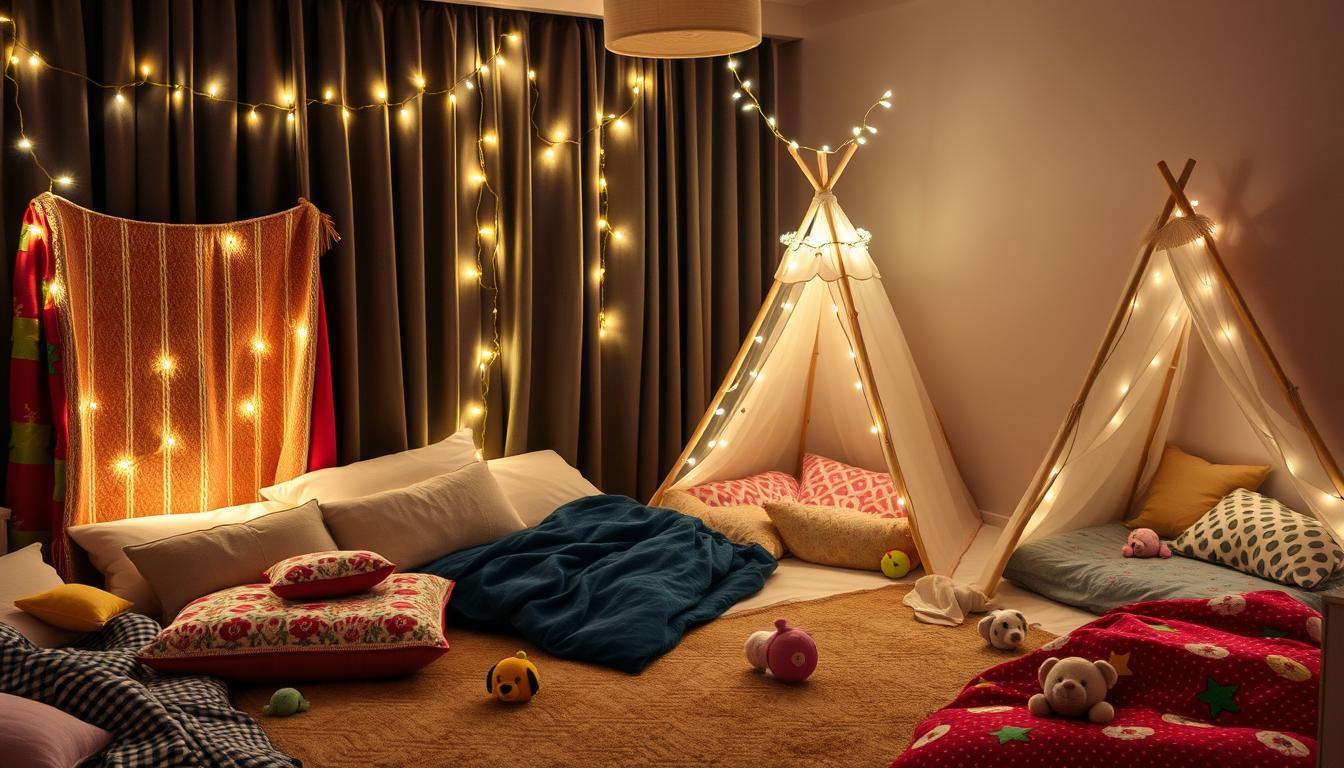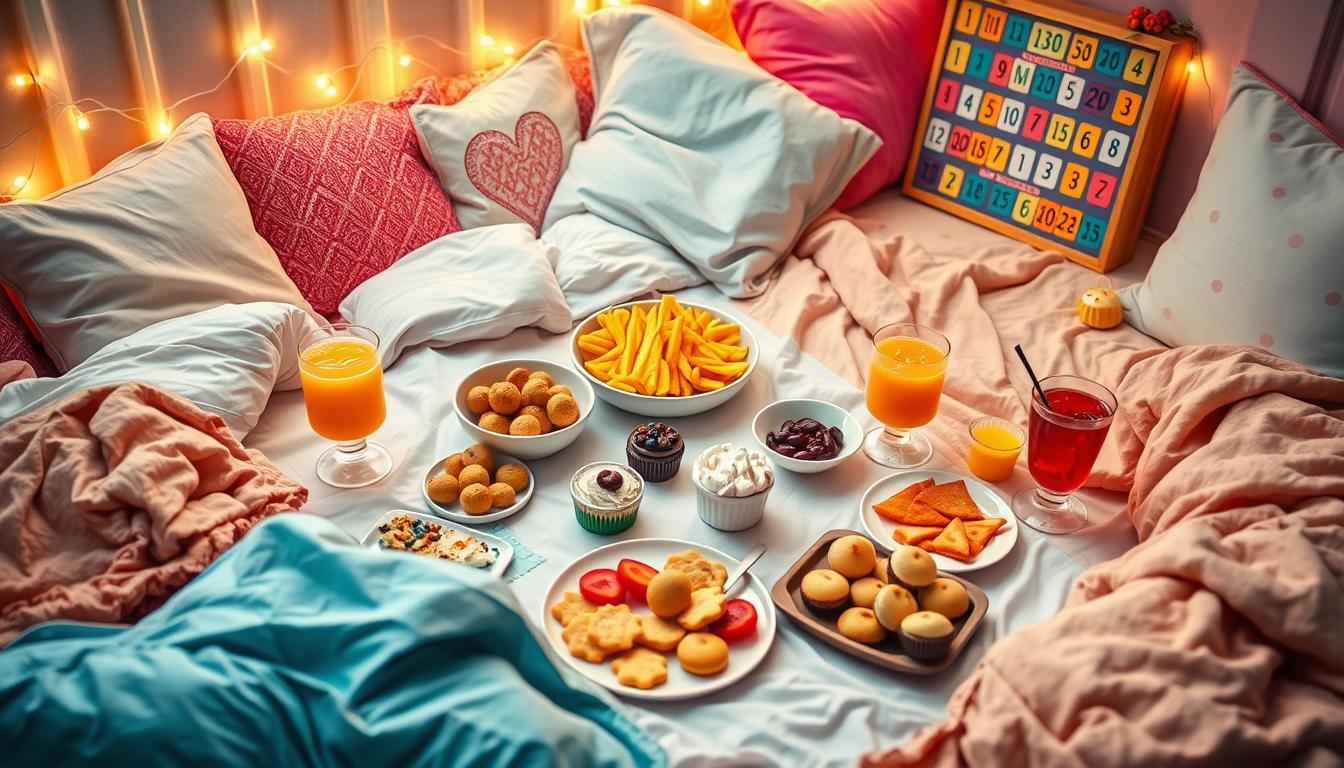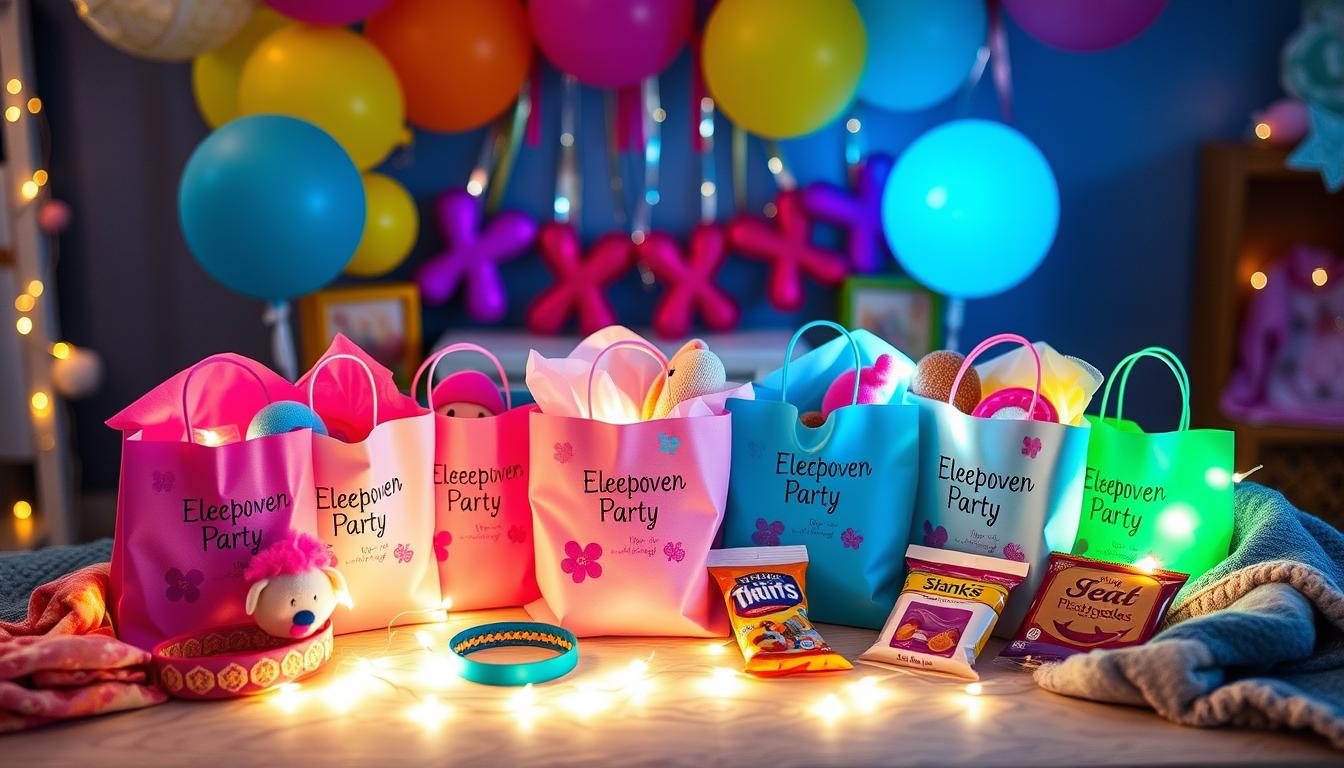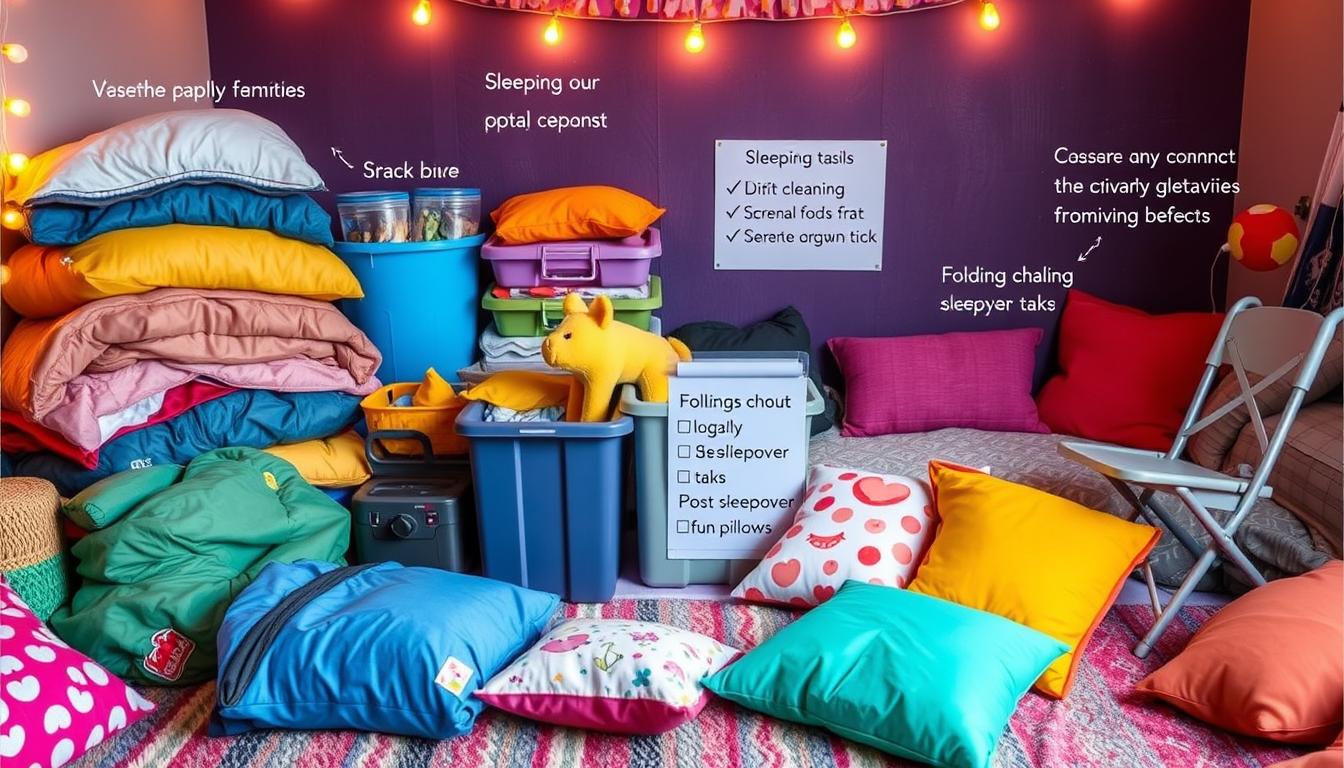Ever thought what makes a sleepover special, beyond the fun? Parents say sleepovers can make friends closer. So, it’s key to know how to arrange privacy well.
Good sleepover planning means everyone feels safe and respected. It helps friends bond and talk openly. This makes the sleepover unforgettable.
Organizing a sleepover means knowing everyone’s limits. It’s about making sure everyone feels welcome and important. This way, you avoid privacy issues and make the sleepover better for everyone.
By following sleepover etiquette, you help create a fun and safe place. Here, friends can grow closer and learn important social skills.
Let’s find out how to make a sleepover fun, safe, and respectful for everyone!
Understanding the Importance of Sleepover Privacy
Sleepover privacy is key for a safe and fun time for kids. When they feel their space is respected, they trust more and share freely. Privacy is vital for a good sleepover, helping kids feel secure and happy.
Privacy at sleepovers helps kids grow emotionally and talk better with friends. It teaches them to set limits and be themselves. This makes everyone feel included and respected, helping them grow socially.
Before sleepovers, parents should talk to kids about privacy. Teaching them to spot safe and unsafe situations boosts their confidence. Setting rules for sleepovers makes the experience better for all.
Establishing Sleepover Ground Rules
Setting clear sleepover rules before the event is key for a fun night. Ground rules help kids know what’s okay, when to go to bed, and what to do if rules are broken. This way, everyone can have a good time and respect each other’s space.
The best number of kids for a sleepover is 3 to 5, mainly for younger ones. Smaller groups mean more fun and easier supervision. Sleepovers on weekends, like Friday or Saturday, are the best for a long, fun night.
Starting a group chat with parents is a great idea. It helps share important info, like food allergies, early. This can prevent up to 90% of food problems. Also, keep parents’ numbers handy, as about 30% of kids might feel homesick.
Ground rules are very important. Only 68% of hosts have them, but they really help avoid fights. Having quiet spots for sleep and a plan for leaving early can also help. This way, about 25% of kids who want to leave early can do so smoothly.
Ground Rules Overview
| Rule | Description |
|---|---|
| Behavior Expectations | Outline what is acceptable and not acceptable during the sleepover. |
| Curfew | Set a specific time for bedtime to help manage energy levels. |
| Communication | Encourage kids to communicate their needs or concerns to adults. |
| Quiet Areas | Designate areas for quiet time to ensure restful sleep. |
| Post-Sleepover Debrief | Discuss the event afterwards for insights that can improve future sleepovers. |
By following these steps, you can make sure everyone has a great time. Good sleepover guidelines can turn a messy night into a fun memory for everyone. To start, it’s essential to establish clear rules and expectations before the party begins. This not only helps set the mood but also allows guests to feel comfortable and included. Additionally, don’t forget to plan for the end of the night by incorporating sleepover departure organization tips, ensuring that everyone leaves with their belongings and fond memories of a fantastic time together.
Sleepover Privacy Arrangement Tips
Creating a cozy space for sleepovers is key to a great time for everyone. Keeping secrets among friends is a big part of this. Good communication helps everyone feel safe to share their thoughts and feelings.
Discuss Confidentiality Among Guests
Keeping things private at sleepovers makes everyone feel secure. When friends know their secrets are safe, trust grows. Set simple rules before the fun starts. These can include:
- Not sharing secrets from the sleepover.
- Respecting each other’s stuff.
- Getting permission before taking photos or videos.
These sleepover privacy arrangement tips help everyone feel free to be themselves. Knowing how to keep things private makes guests more relaxed.
Encourage Open Communication
Talking openly at sleepovers helps solve problems and makes everyone feel included. Create a space where everyone can share ideas and feelings. This leads to:
- Fast solutions to any issues.
- Everyone feeling important and heard, which strengthens bonds.
- Fun activities planned together.
Open talk keeps things private and makes the sleepover more fun. When guests share their thoughts, everyone has a better time.
| Tip | Benefit |
|---|---|
| Establish confidentiality rules | Builds trust among guests |
| Promote open dialogue | Enhances mutual understanding |
| Foster supportive sharing | Strengthens friendships |
| Encourage suggestions for activities | Increases engagement levels |
Creating a Comfortable Sleepover Environment
Making a sleepover cozy is key to making everyone feel at home. Paying attention to each person’s needs is important. Setting up personal spaces helps guests feel like they own the place, making the night better for everyone.
Setting Up Personal Spaces
Having personal spaces is a must for comfort. You can use blankets, pillows, or plush toys to create these areas. This way, each guest has their own cozy spot, yet they’re part of the group too.
Placing furniture well can also make these spaces better. It ensures each guest has a place to relax or chill out.
Using Dividers and Screens for Privacy
Privacy is key to a good sleepover. Using dividers or screens can help. They give guests a private spot, making them feel safe and comfortable.
Whether you use foldable screens or temporary dividers, they turn a shared area into personal retreats. It shows that a great sleepover is all about careful planning.
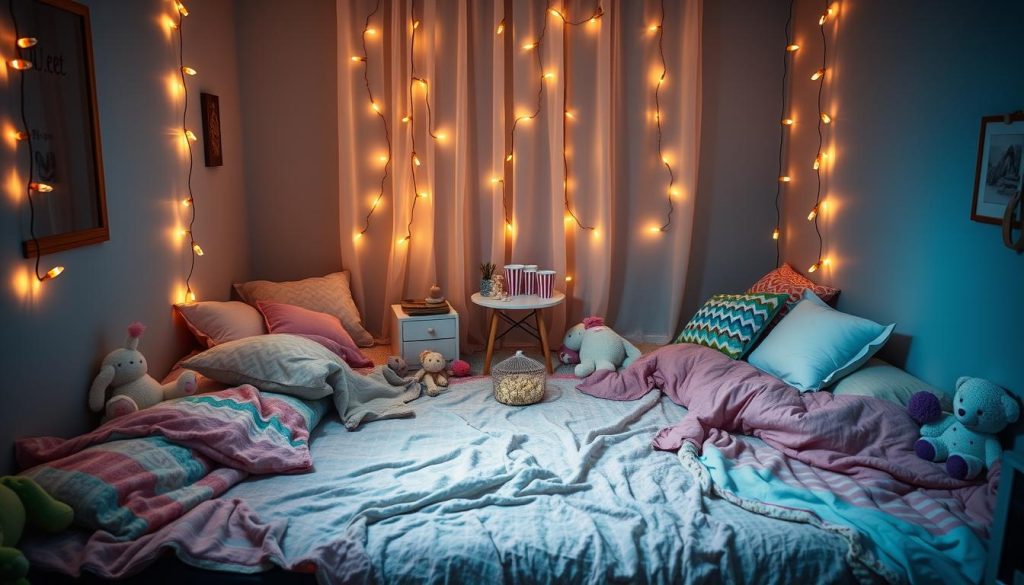
Incorporating Sleepover Safety Guidelines
Keeping everyone safe at a sleepover needs careful planning and talking. Start by getting parents involved in the planning. Talking about boundaries beforehand helps set clear rules and eases parents’ worries about their child’s safety.
Discussing Boundaries with Parents
Talking openly about safety with parents makes the sleepover safer. Important topics include:
- Emergency contact info for all guests.
- House rules and what’s expected.
- Keeping personal info shared at the sleepover private.
- Rules for who can go where in the house.
These talks build trust among parents and teach kids the value of respecting boundaries.
Safety Measures for Overnight Guests
Setting up safety rules helps keep kids safe from harm. Here are some steps to take:
- Make sure boys and girls have their own sleeping areas.
- Limit who can enter personal rooms to avoid bad interactions.
- Have an adult watching over the kids all night.
- Keep a list of emergency contacts handy for all guests.
Research shows 42% of parents worry about sleepover safety because of lack of supervision. Having safety plans in place makes the sleepover fun for everyone.
| Safety Measure | Purpose | Expected Outcome |
|---|---|---|
| Gather emergency contacts | Accessibility during emergencies | Quick response to incidents |
| Set house rules | Clarify behavior expectations | Foster respectful interactions |
| Adult supervision | Ensure safety and security | Prevention of inappropriate behavior |
| Separate sleeping arrangements | Minimize risks of unsupervised situations | Promote comfort and peace of mind |
By focusing on sleepover safety, you make a safe space for kids to have fun. This also gives parents peace of mind.
Fun Activities that Foster Trust and Bonding
Sleepovers are great for kids to make deeper connections with friends. They can do this through fun activities. Arts and crafts and team-building games are excellent choices.
Creative Arts and Crafts
Introducing arts and crafts for kids at sleepovers boosts creativity and friendship. Set up a craft station with lots of supplies. Kids can make things like:
- Friendship bracelets
- Decorated pillowcases
- Handmade cards
These activities let kids express themselves and work together. Art projects help them share experiences and bond.
Team-Building Games
Fun sleepover games help kids communicate better and build trust. Try games like scavenger hunts or trivia. They add excitement and teamwork.
- Karaoke sessions to promote musical expression
- Board games, like Monopoly or Scrabble, for cooperative problem-solving
- Outdoor games such as water balloon fights to inject energy and fun
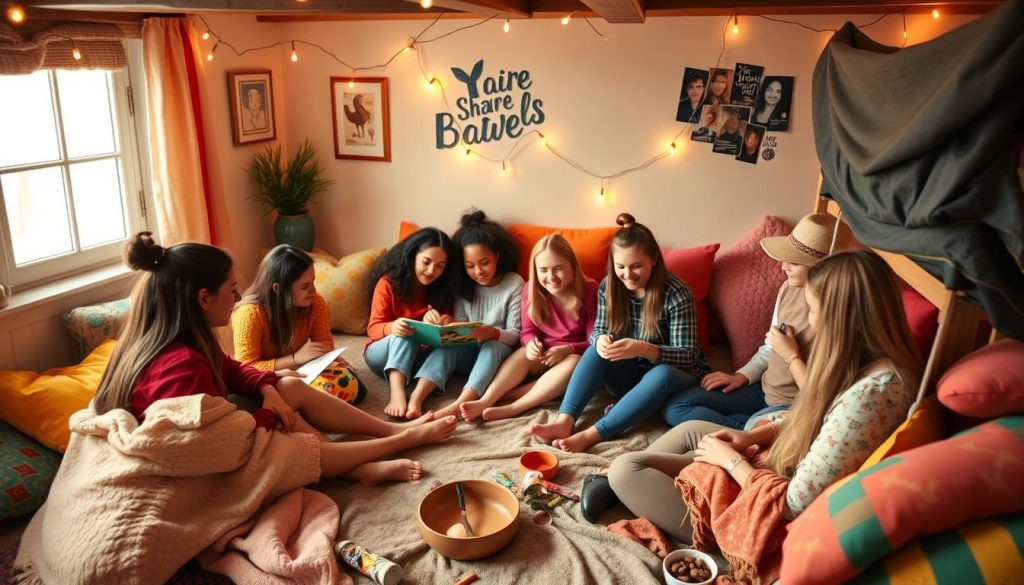
Getting kids involved in these activities makes the sleepover unforgettable. It also teaches them important skills like cooperation and communication. By focusing on bonding, you help friendships grow stronger.
Planning for Dietary Restrictions and Comfort
When planning a sleepover, it’s key to think about dietary restrictions. This ensures all guests feel welcome and comfortable. About 70% of parents say talking about food restrictions before the event helps. Knowing about food allergies and preferences makes the atmosphere more welcoming.
Respecting Food Allergies and Preferences
It’s important to respect food allergies at sleepovers. Kids often worry if their dietary needs will be met. Studies show 65% of kids worry about this.
Parents should tell hosts about any allergies or dietary restrictions. This advice comes from 90% of pediatricians. Talking with other parents can help avoid problems during the event.
Organizing a Snack Station for Everyone
Setting up a snack station can make the sleepover better. Offer snacks like gluten-free, dairy-free, and nut-free options. This makes everyone feel included.
Think about snacks like chips, popcorn, fruits, and veggies. This variety ensures everyone finds something tasty. About 80% of parents think packing familiar foods helps kids feel more comfortable.
To manage snacks and dietary needs well, try these strategies:
| Strategy | Description |
|---|---|
| Two-Week Notice | Send invites out at least two weeks prior to the sleepover, asking about dietary preferences. |
| Involve Kids | Let children participate in the packing process to help manage their expectations and reduce anxiety. |
| Variety of Snacks | Plan for a diverse selection of snacks, ensuring options for different dietary restrictions are available. |
| Chaperone Coverage | Have one adult for every 5-10 children for supervision and to address any dietary concerns. |
Conclusion
Learning how to arrange privacy at sleepovers is key for a safe and fun time for kids. Setting clear rules and talking openly helps everyone feel safe and valued. This way, you protect them from harm and help them grow closer to their friends.
Many parents worry about their kids at sleepovers, but good privacy plans can ease these fears. Studies show that talking about personal space and having a plan to leave can make kids feel more at ease.
Preparing for sleepovers by respecting food choices, creating personal areas, and keeping things safe is important. It helps kids have a great time and learn important social skills. By focusing on safety and communication, you help your kids make lasting friendships and feel more confident in their social world.
Source Links
- Unleash the Fun with the Ultimate Sleepover Handbook
- The home sleepover lets potential buyers experience what it would be like to live in that dream manor. But be careful before handing over the keys.
- Fun Sleepover Activities for 11 Year Olds: Ultimate To-Do List
- Perspective: The great sleepover debate
- The 5 Things You Need To Know For Safe Sleepovers
- How parents can safely navigate their kid’s first sleepover
- Parents, Here’s How to Plan & Prepare for a Sleepover with Kids – Amerisleep
- Safer Sleepovers
- 7 Tips for a Safer Sleepover – Child Rescue Coalition
- Host the perfect sleepover party – tips and ideas | PartyWizz Blog
- Create a Comfy Sleepover Space and Top Chick Flicks – Nesting With Grace
- How to Create Comfortable Guest Sleeping Arrangements for the Holidays – Bed Advice UK
- 8 Questions for Safer Sleepovers – Project Harmony
- Create the Ultimate Bedroom for Sleepovers | Boori UK
- No Sleepovers | Terrible, Horrible, No-Good, Very Bad Parents
- Why We Don’t Do Sleepovers (and what we do instead!)
- Safer activities and events | NSPCC Learning
- 24 Team Bonding Activities, Games & Ideas for Work
- What to Do at Sleepovers: 35 Ideas For An Epic Night – Parent From Heart
- Your Child’s First Sleepover: Make it Memorable with These 13 Tips – Roswell, Alpharetta, Milton | Omega Pediatrics
- Summer Sleepover Parties: How to Plan and Host a Fun and Safe Kids’ Sleepover — Play Boutique
- A Parent’s Guide to Safe and Enjoyable Sleepovers
- Guide for Parents: Navigating Kids’ First Sleepover Safely
- Sleepover- Is This A Good Idea For Your Child? – Naija UK Mum

